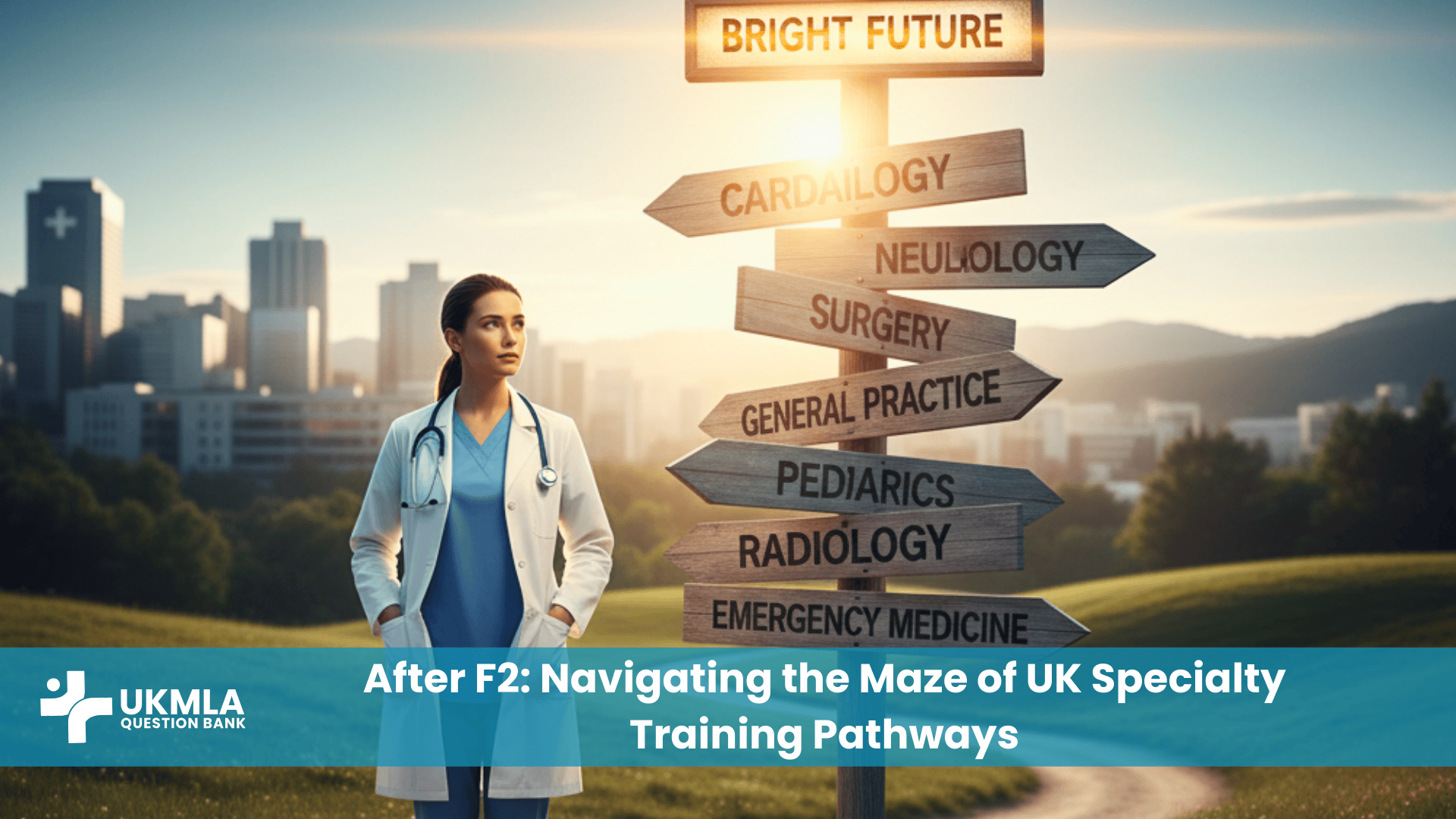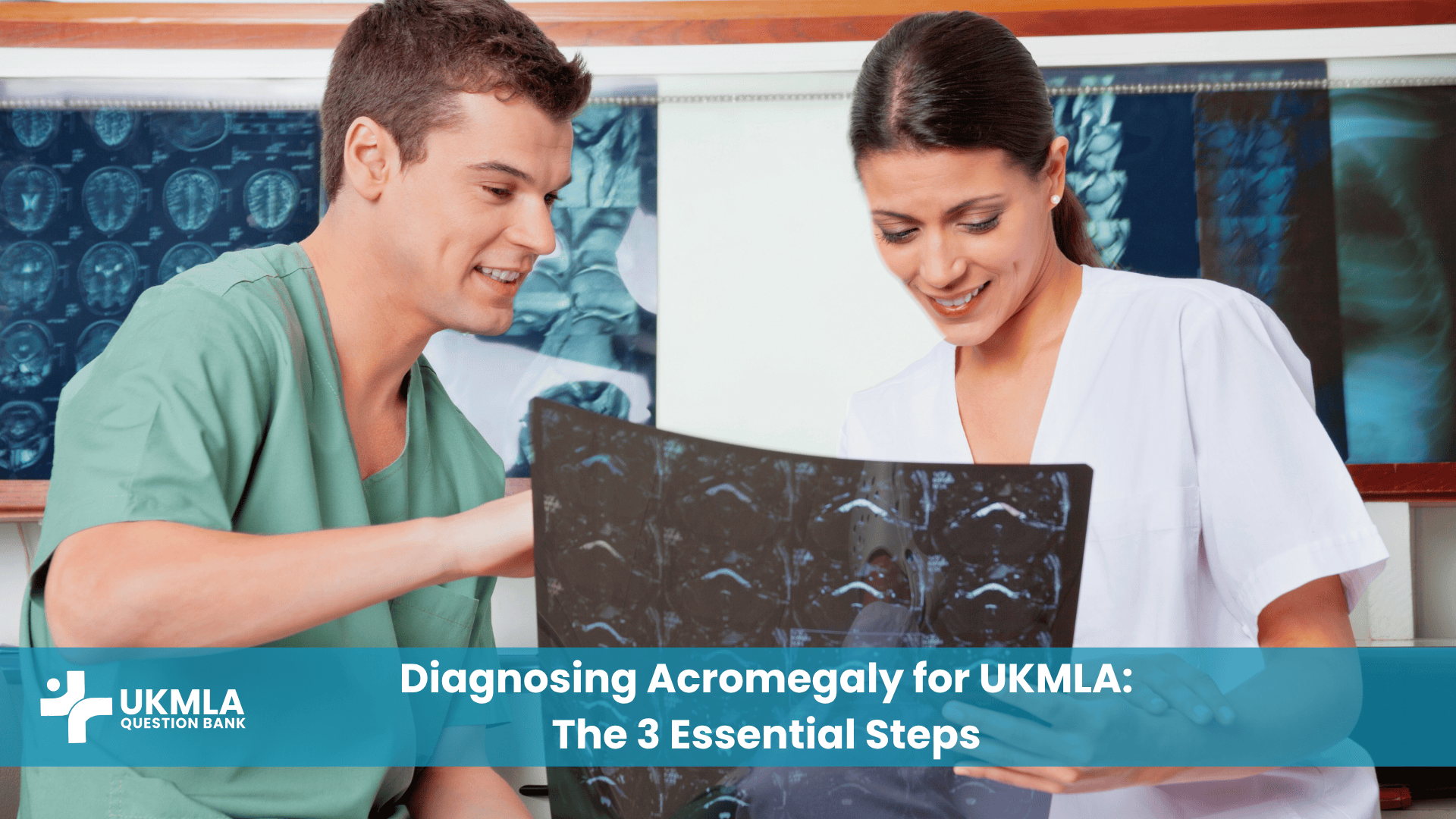Introduction
Navigating the various UK specialty training pathways is one of the most significant crossroads in a doctor’s career after completing the Foundation Programme. The question shifts from “can I be a doctor?” to “what kind of doctor will I be?”. After two years of rotating through various specialties, building your core competencies, and finally feeling like you have your feet on the ground, you are faced with a monumental decision that will shape the rest of your professional life. For many, this transition from the highly structured life of an F1 and F2 doctor is both exciting and incredibly daunting.
This guide is designed to be your map through this complex decision-making process. The world of medical training in the UK is filled with acronyms, different application systems, and distinct pathways that can be confusing to navigate. We will demystify the main training routes available to you after completing F2, explain the fundamental differences between run-through and uncoupled programmes, and explore other popular post-F2 options. This guide builds on the foundations laid out in the UK Graduate’s Essential Guide to Starting FY1, taking you to the next crucial stage of your journey.
Table of Contents
ToggleThe Core Concepts: Run-Through vs. Uncoupled Training
The first and most important concept to understand is the distinction between “run-through” and “uncoupled” training. Your choice between these two models will determine your application strategy and career trajectory for the next several years.
Run-Through Training Explained
Run-through training is a single, seamless training programme that takes you from Specialty Trainee Year 1 (ST1) right through to gaining your Certificate of Completion of Training (CCT). You apply once at the end of F2, and if successful, you have a guaranteed path to becoming a consultant or GP in that specialty, provided you meet the progression requirements each year.
Pros: The biggest advantage is job security. You know exactly where you will be for the entire duration of your training. There is no need to re-apply or face another round of competitive interviews midway through.
Cons: The main drawback is a lack of flexibility. You are committing to a specialty very early in your career. If you change your mind a few years in, leaving the programme can be a difficult decision.
Examples: General Practice (GP), Ophthalmology, Obstetrics & Gynaecology, Paediatrics, Radiology, and Public Health.
Uncoupled Training Explained
Uncoupled training is a two-stage process. First, you apply for a 2-3 year “Core Training” programme (e.g., Core Surgical Training). This gives you broad-based experience in a field. After completing this, you must re-apply in a second, highly competitive process for a “Higher Specialty Training” post, starting at the ST3 or ST4 level.
Pros: The primary benefit is flexibility. You gain more experience in a broad field before having to commit to a specific sub-specialty. This period also allows you to build a stronger portfolio for the competitive higher training applications.
Cons: The major disadvantage is a lack of job security. There is no guarantee you will get a higher specialty training post immediately after finishing your core programme, which can lead to a bottleneck and a period of uncertainty.
Examples: All surgical specialties (via Core Surgical Training), all medical specialties (via Internal Medicine Training), Anaesthetics, and Emergency Medicine (often via ACCS).
Table 1: Run-Through vs. Uncoupled Training at a Glance
| Feature | Run-Through Training | Uncoupled Training |
|---|---|---|
| Applications | One application at ST1 level | Two applications: one for Core, one for Higher |
| Job Security | High (guaranteed path to CCT) | Lower (no guarantee of ST3+ post) |
| Flexibility | Lower (committed to one specialty early) | Higher (more time to choose a sub-specialty) |
| Example Pathways | GP, Paediatrics, Radiology, O&G | Surgery, Medicine, Anaesthetics, EM |
Exploring the Main UK Specialty Training Pathways
Here is a brief overview of the most common UK specialty training pathways that doctors enter after their Foundation Programme.
General Practice (GP) Training
This is the most popular specialty choice in the UK. It is a 3-year run-through programme that typically involves 18 months in a hospital setting (doing rotations in specialties like Paediatrics, A&E, and Medicine) and 18 months based in a GP surgery. It leads to a CCT in General Practice, allowing you to work as a GP.
Internal Medicine Training (IMT)
IMT is the main gateway to the physician specialties. It is a 3-year uncoupled core programme that provides broad experience across medical specialties like Cardiology, Respiratory, and Geriatrics. After completing IMT and passing the MRCP(UK) exams, you apply competitively for higher specialty training (ST4 level) in your chosen field, such as Gastroenterology or Rheumatology.
Core Surgical Training (CST)
CST is the 2-year uncoupled core programme for all aspiring surgeons. Trainees rotate through various surgical specialties, such as General Surgery, Trauma & Orthopaedics, and Urology. This is a highly competitive programme focused on developing basic surgical skills and passing the MRCS exams. After CST, you apply for ST3 posts in your chosen surgical specialty.
Other Popular Pathways
ACCS (Acute Care Common Stem): A 3-year uncoupled core programme for doctors interested in the acute specialties. It provides training in Emergency Medicine, Acute Medicine, Anaesthetics, and Intensive Care, before trainees apply for higher training in one of those fields.
Psychiatry: A run-through programme, though it can also be entered after a core training period.
Paediatrics: A run-through programme for doctors wanting to work with children.
Life Beyond the Training Pathway: Other Post-F2 Options
It’s important to remember that you do not have to go straight into a specialty training programme. Many junior doctors choose to take alternative routes for a variety of personal and professional reasons.
The “F3 Year”: A Year of Freedom?
Taking an “F3 year” has become increasingly popular. This involves leaving the formal training pathway after F2 to work as a locum doctor.
Pros: The pay is often significantly better, you have complete control over your rota and holidays, and it provides a chance to gain more experience in a specific department or to travel.
Cons: It is not a formal training year, so you get less supervision and structured education. You are responsible for your own appraisal and revalidation, and it can sometimes be seen as a disadvantage when applying for competitive specialties later on. For those who may need to improve their application, it’s a good time to work on things, as detailed in our guide on retaking the UKMLA.
Clinical Fellow / Trust Grade Roles
These are non-training service provision posts within an NHS Trust, often for 12 months. They are a good middle ground between locum work and a formal training post. You get the stability of a contract and are an integrated member of a team, often with some protected teaching time, but without the formal requirements and assessments of a training programme.
Blockquote: The official NHS Health Careers website is the definitive resource for exploring every specialty in detail. It provides information on training length, curriculum, and competition ratios, and should be your first port of call when researching your options.
Frequently Asked Questions (FAQ) about Specialty Training
Applications are typically made through the Oriel system during the final year of your current training (i.e., in F2 for ST1 posts, or in CT2/IMT3 for ST3/4 posts).
This is the number of applications per available post for a given specialty. A high competition ratio (e.g., 10:1) indicates a very competitive specialty. This information is published annually and can help guide your choices.
Extremely important. Your portfolio is the evidence of your achievements and commitment to a specialty. It includes your exam scores, audits, research, presentations, and teaching experience. A strong portfolio is essential for competitive specialties.
It is possible but can be difficult, especially later in training. It often requires re-entering the application process at an earlier stage.
Yes. For uncoupled specialties, passing the relevant Royal College membership exams during your core training is an essential requirement for being eligible to apply for higher specialty training (ST3+).
Absolutely. Taking time out is very common. You just need to show that you have kept up your skills and have maintained your portfolio during your time out of training.
UKFPAS is the application system for the Foundation Programme (F1/F2). The application for specialty training is a completely separate process that happens after F2. For more, see our UKFPAS Application Guide.
Yes. Once an IMG has gained GMC registration and completed the equivalent of the UK Foundation Programme (e.g., via the WAST pathway or by having extensive experience), they apply for specialty training through the same national recruitment system as UK graduates. For more, see the BMJ’s guide for IMGs.
Yes. All specialties in the UK offer Less Than Full Time (LTFT) training options for doctors with well-founded reasons, such as health issues or caring responsibilities.
A Certificate of Completion of Training. This is the certificate you are awarded at the very end of your specialty training programme, which allows you to be entered onto the GMC’s Specialist Register and apply for consultant or GP posts.
Conclusion
Choosing your career path after F2 is one of the most exciting and defining moments of your medical journey. The variety of UK specialty training pathways offers a wealth of options, from the structured security of a run-through programme to the flexibility of uncoupled training, with plenty of opportunities to take time out and explore your interests along the way. The key is to make an informed decision that aligns with your skills, personality, and long-term career goals.
Take the time to research different specialties thoroughly, speak to trainees and consultants in those fields, and get as much taster experience as you can. There is no single “right” path, and what works for your friends may not be right for you. By reflecting on your experiences and planning ahead, you can navigate the maze of specialty applications with confidence and find the career that is the perfect fit for you. Adopting a winning mindset is crucial during this important transition.



